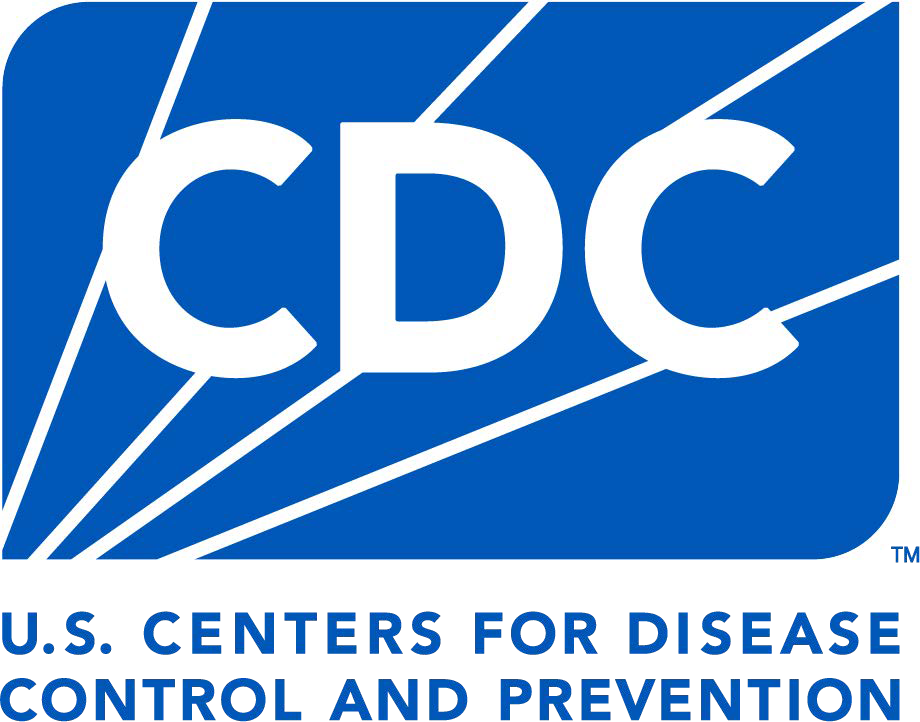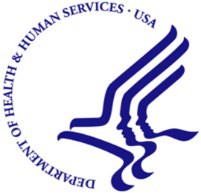Form 0920-1424 Facility Incident Reporting Form FOR POLIOVIRUS RELEASE
[CPR] U.S. National Authority for Containment of Poliovirus Data Collection Tools
Att 3- Release and Exposure _final
Att 3_ Facility Incident Reporting Form FOR POLIOVIRUS RELEASE or POTENTIAL EXPOSURE
OMB: 0920-1424
Facility
Incident
Reporting

 Facility
Incident
Reporting
Form
Facility
Incident
Reporting
Form
FOR POLIOVIRUS RELEASE or POTENTIAL EXPOSURE
Facilities retaining poliovirus infectious materials must report any poliovirus containment breach to the U.S. CDC Emergency Operation Center (EOC) at (770) 488-7100. After notifying the EOC, submit this form to the U.S. National Authority for Containment of Poliovirus (NAC) at [email protected] within 12hours of the incident. Form sections A and B must be
FORM APPROVED OMB NO. 0920-1424 EXP DATE: 12/31/2026
reported within 12 hours of the incident, and any information not available at the time of submission should be provided as a resubmission within
72 hours of the incident. The U.S. NAC may share information about the incident with relevant CDC leadership and a national poliovirus containment oversight body to ensure appropriate measures are implemented.
FORM INSTRUCTIONS: Fill out each section of the form as completely as possible. Provide a signature after all sections are complete. If you are unable to sign digitally; print the document, sign manually, and scan to PDF format. If the form is opened using a web browser and features are unavailable, reopen with Adobe Acrobat. Send the completed form to the U.S. NAC at [email protected]. Contact NAC for assistance at [email protected] or 404-718-5160.
A. FACILITY INFORMATION (REPORT WITHIN 12 HOURS)
 Facility
Name:
Facility
Name:
 Department:
Department:

 Address: City:
Address: City:
![]() State:
State:
![]() ZIP:
ZIP:
FACILITY CONTACT INFORMATION
Form submitted by:
Title
Name Email Phone # Format: (xxx) xxx-xxxx
1 Date of incident discovery1:
(Date format: MM/DD/YYYY)
 3.
Date
of
CDC/NAC
notification:
3.
Date
of
CDC/NAC
notification:
(Date format: MM/DD/YYYY)
2. Time of incident discovery:
 (Include
time zone,
Ex:
9:15
am
EST)
(Include
time zone,
Ex:
9:15
am
EST)
4.
Has
the
incident
been
reported
to
the
facility
biosafety
officer?........................................................... Yes
![]() No
No
![]() N/A
N/A
![]()
5.
Has
the
incident
been
reported
to
the
facility
Occupational
Health
Provider?................................ Yes
![]() No
No
![]() N/A
N/A
![]()
6 Has the incident been reported to the appropriate federal, state, and/or local health agency?
 Incident
type
(e.g.,
potential
exposure
or
release):
Incident
type
(e.g.,
potential
exposure
or
release):
Yes
![]()
No
![]() N/A
N/A
![]()
 At
what
biosafety
level
did
the
incident
occur?
At
what
biosafety
level
did
the
incident
occur?
1 The date of incident discovery is the date that the incident was discovered by facility staff.
If other, please describe:
 Submit
Form
Submit
Sections
A
and
B
within
12
hours
Submit
Form
Submit
Sections
A
and
B
within
12
hours
 Public
reporting
burden:
CDC estimates
the average
public reporting
burden for
this collection
of information
as 45
minutes per
response, including
the time
for reviewing
instructions, searching existing data/information sources, gathering
and maintaining the data/information needed, and
completing and reviewing the collection information unless it
displays a currently valid OMB control number. Send comments
regarding this burden estimate
or any other aspect of this collection of information, including
suggestions for reducing this burden to CDC/ATSDR Information Review
Office; 1600 Clifton Road NE, MS D-74, Atlanta, Georgia 30333; ATTN:
PRA (0920-1424).
Public
reporting
burden:
CDC estimates
the average
public reporting
burden for
this collection
of information
as 45
minutes per
response, including
the time
for reviewing
instructions, searching existing data/information sources, gathering
and maintaining the data/information needed, and
completing and reviewing the collection information unless it
displays a currently valid OMB control number. Send comments
regarding this burden estimate
or any other aspect of this collection of information, including
suggestions for reducing this burden to CDC/ATSDR Information Review
Office; 1600 Clifton Road NE, MS D-74, Atlanta, Georgia 30333; ATTN:
PRA (0920-1424).
B. INCIDENT INFORMATION, CONTINUED (REPORT WITHIN 12 HOURS)
Briefly describe incident details e.g., location (bldg, room, etc.) and equipment (freezer, centrifuge, etc.).

Note:
Full
description
of
the
incident
should
be
provided
in
Section
C
(#21)
within
72
hours
of
the
incident
discovery.
Enter the material type, virus type, sample type, and if known, the amount of virus sample involved in the incident. If there is a mixture of material types, enter a separate record for each material type in separate rows. If known, enter the viral concentration (ml or g) and/or poliovirus strain associated with the incident.

Material Type |
Virus Type |
Sample Type |
Amt. (ml or g) |
Conc. (µg/ml or titer) |
Poliovirus Strain |
|
|
|
|
|
|
|
|
|
|
|
|
|
|
|
|
|
|
![]()
Type of incident. (Choose all that apply)

 Animal
bite/scratch
Animal
bite/scratch
Needle stick/sharps
Equipment/mechanical failure
Work performed outside designated area (e.g., open bench )



 What
PPE
was
worn
at
the
time
of
the
incident?
(Choose
all
that
apply)
What
PPE
was
worn
at
the
time
of
the
incident?
(Choose
all
that
apply)
 Hand
protection (gloves)
Hand
protection (gloves)
 Face
protection (e.g.,
face shield,
surgical mask)
Face
protection (e.g.,
face shield,
surgical mask)
Foot protection (e.g., booties, shoe covers)


 Respiratory
protection: Enter
type
Respiratory
protection: Enter
type
No PPE worn

 Body
protection (e.g.,
lab coat)
Body
protection (e.g.,
lab coat) ![]() Other:
Other:
![]()
Was there a release beyond secondary containment (i.e., biosafety cabinet)?
 Yes
Yes  No
No
12a.
If yes,
select one
that applies:
![]() Release
outside
primary
containment
or
laboratory
Release
outside
primary
containment
or
laboratory
![]() Release outside of storage-only area
Release outside of storage-only area
![]() Unsure
Unsure
![]() Release
outside all
facility barriers
(i.e., resulting
in possible
environmental/public
health threat)
Release
outside all
facility barriers
(i.e., resulting
in possible
environmental/public
health threat)
![]()
6 Did the release result in a potential human exposures(s)? Yes No Unsure
![]()
![]()
![]()
 6a.
If yes, how many individuals were known to be exposed?
6a.
If yes, how many individuals were known to be exposed?
6b. What was the route of exposure?
 6c.
Are all
exposed individuals
fully vaccinated
against poliovirus?2 Yes
6c.
Are all
exposed individuals
fully vaccinated
against poliovirus?2 Yes
![]()
![]() 6d.
Are poliovirus
antibody titers
available for
all exposed
individuals Yes
6d.
Are poliovirus
antibody titers
available for
all exposed
individuals Yes
No
![]() Unsure
Unsure
![]()
No
![]() Unsure
Unsure
![]()



7.
Describe the
exposed person(s)
hand washing
and doffing
procedures post
incident. 8.
Describe how
lab area(s),
equipment, and PPE
were decontaminated.
2 Note: Fully vaccinated status for poliovirus in adults include 3+ doses of the inactivated poliovirus vaccine (IPV) or oral polio vaccine (OPV).
C. POST INCIDENT SURVEILLENCE & RISK ASSESSMENT (REPORT WITHIN 72 HOURS)
1.
Describe
any
post-incident
medical
treatment
provided,
isolation
of
exposed
persons,
and/or
surveillance
activities
conducted.3
2.
Provide
the
post-incident
travel
history
of
any
exposed
person(s),
including
the
use
of
public
transit,
if
known.



Describe any environmental risks associated with the incident? (e.g., release into wastewater system)

Describe any changes in information from Sections A and B above since the incident.

5 Describe any immediate corrective actions identified and/or executed to mitigate the incident.

3Strategies used to respond to a breach of containment and prevent the potential establishment of further transmission include risk assessment, isolation of exposed persons and quarantine of their contacts, stool and throat sample analyses to assess PV shedding, infection control and disinfection, targeted vaccination and the intensification of surveillance.
C. ADDITIONAL INCIDENT DETAILS, CONTINUED (REPORT WITHIN 72 HOURS)
Provide a full narrative of the incident, including steps taken immediately after the incident.

D. DECLARATION
By signing this document, I acknowledge that the data provided are correct and accurately reflect the reported incident. I understand that the information provided on this form may be provided to relevant CDC leadership and may result in the declaration of a public health event of international concern (PHEIC) in alignment with International Health Regulations.4

E-signature after Sections A, B, and C are complete:


 (
e.g.,
Laboratory
Head,
(
e.g.,
Laboratory
Head,
Principal Investigator) Title:
Date:
Submit Form Submit Sections C and D within 72 hours of incident

DEFINITIONS (General definitions on U.S.NAC website)
Accountable individual: A person responsible for poliovirus materials (e.g., Principal Investigator, Laboratory Director).
Accident/incident: Event that occurs with IM or PIM poliovirus which may impact poliovirus containment. Events may result in the following:
Injury
Exposure or illness
Breach of containment
Other events resulting in property damage or disruption of facility operations
Accidents/incidents hereinto referred to as incidents.
Certificate of Registration (CR):A CR indicates that the U.S. NAC acknowledges the facility has met the primary containment conditions for designation as a U.S. poliovirus-essential facility.
Facility: Any site (e.g., laboratory, repository, or vaccine production unit) owned or operated by any level of government, academic institution, corporation, company, partnership, society, association, firm, sole proprietorship or other legal entity.
Date of incident discovery: Date incident was discovered by facility staff.
Infectious material (IM):Clinical materials from confirmed wild poliovirus (including VDPV) infections or OPV/Sabin; environmental sewage or water samples that have tested positive for the presence of wild polioviruses or OPV/Sabin strains.
Nucleic acids: Refers to RNA, cDNA and total nucleic acid, extracted from poliovirus infectious materials (e.g., a virus isolate) or potentially infectious materials (e.g., stool, respiratory specimen, sewage). Extraction methods not validated to inactive poliovirus should be reported as inactivation failures for these materials.
Personal protective equipment (PPE): Equipment and/or clothing worn by personnel to provide a barrier against biological agents, thereby minimizing the likelihood of exposure. PPE includes, but is not limited to, laboratory coats, gowns, full-body suits, gloves, protective footwear, safety glasses, safety goggles, masks and respirators.
Poliovirus containment perimeter: Poliovirus-essential facility area(s) listed on the PEF CR application.
Potentially Infectious Materials (PIM): All materials potentially contaminated with any type or strain of WPV or OPV/Sabin poliovirus, or where the presence. PIM can include but is not limited to:
Fecal or respiratory secretion samples and their derivatives (e.g., stool suspensions, extracted nucleic acids, etc.) collected for any purpose in
a geographic area where WPV/cVDPV is present or OPV is being used at the time of collection
Products of such materials (above) from PV-permissive cells or
experimentally infected polio-susceptible animals
Uncharacterized enterovirus-like cell culture isolates derived from human specimens from countries known or suspected to have circulating WPV/VDPV or use of OPV at the time of collection
Respiratory and enteric virus stocks derived from PV PIM and handled under conditions conducive to maintaining the viability or enabling the replication of incidental PV
Environmental samples (e.g., concentrated sewage, wastewater) collected from areas known or suspected to have circulating WPV/VDPV or use of OPV at the time of collection.
Poliovirus containment breach: Loss of poliovirus containment at any level which may result in potential infection to persons or potential spread in the environment. Any facility accident involving IM or PIM poliovirus that may potentially expose humans to any poliovirus through ingestion, inhalation, or skin contact by release, exposure, theft, or loss.
Poliovirus exposure: Any facility accident that potentially exposes humans to any poliovirus.
Poliovirus release: Loss of primary containment of IM or PIM poliovirus which may result in potential infection to persons or potential spread in the environment.
Poliovirus Designated Facility (PVDF): A facility designed by the US NAC as serving a critical national or international function that involves the handling and/or storage of needed poliovirus infectious or potentially infectious material.
Risk assessment: A qualitative or semi-qualitative process undertaken by individuals with expertise in appropriate disciplines and backgrounds in response to an identified hazard.
Sabin/OPV: Attenuated poliovirus strains (approved for use in oral polio vaccines by national regulatory authorities, principally Sabin strains).
VDPV: Vaccine-derived poliovirus; Classified with wild polioviruses and usually demonstrate 1–15% sequence differences from the parental OPV strain; they may have circulated in the community (cVDPV) or have replicated for prolonged periods in immunodeficient subjects
(iVDPV) or be ambiguous and of unknown origin (aVDPV).
4 Centers for Disease Control and Prevention. (2024, May 15). International Health Regulations. Global Health. https://www.cdc.gov/global-health/topics-programs/ihr.html/
Page 1
of 5

| File Type | application/vnd.openxmlformats-officedocument.wordprocessingml.document |
| File Title | Facility Incident Reporting Form FOR POLIOVIRUS RELEASE or POTENTIAL EXPOSURE |
| Author | zfg0 |
| File Modified | 0000-00-00 |
| File Created | 2025-11-25 |
© 2025 OMB.report | Privacy Policy